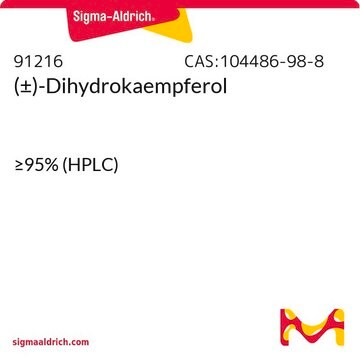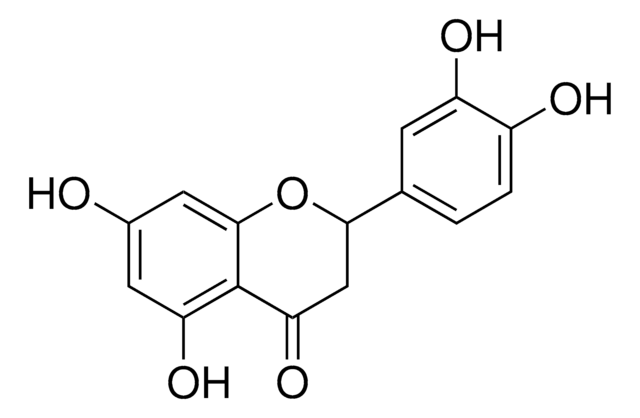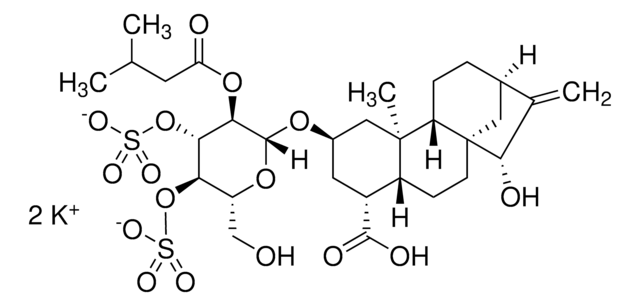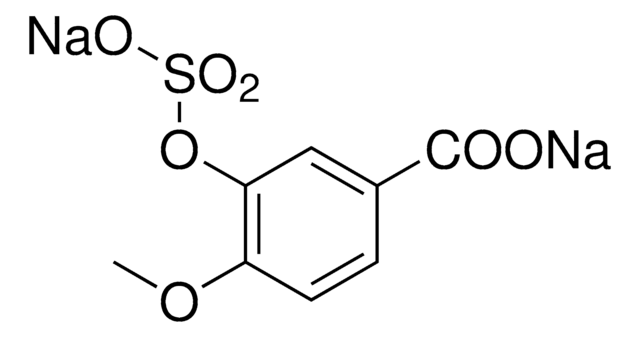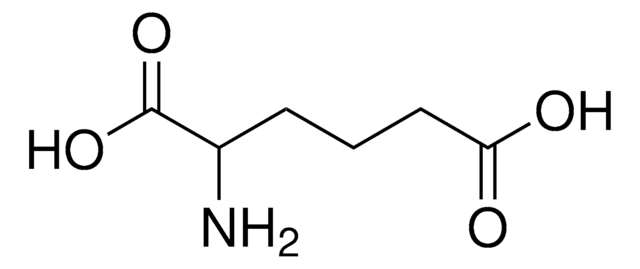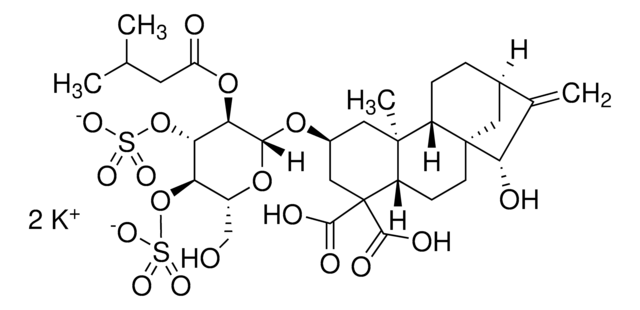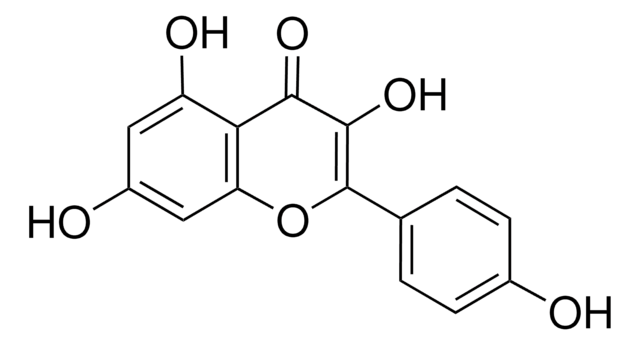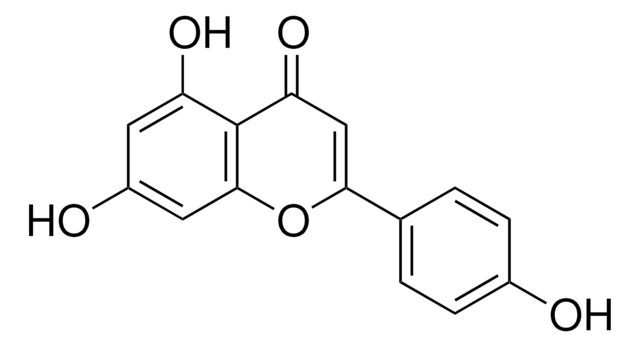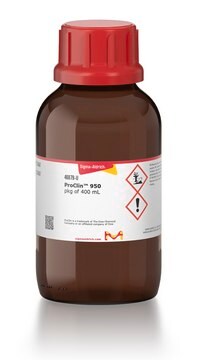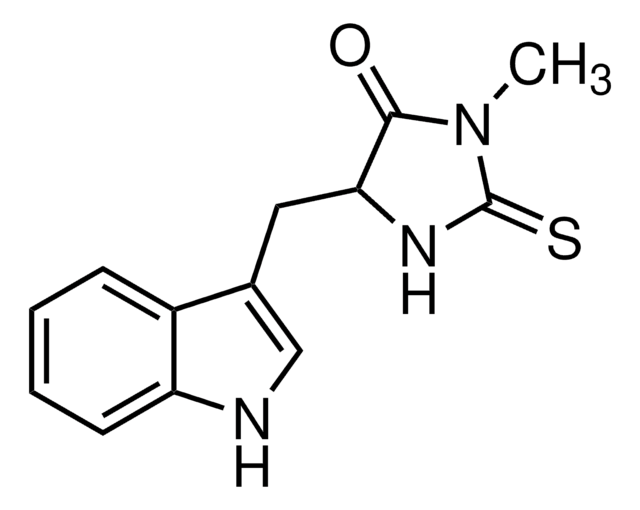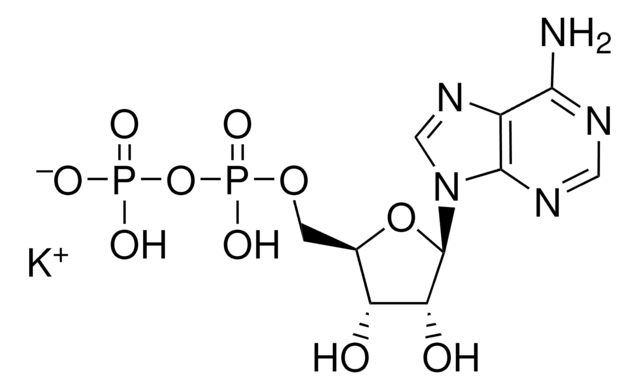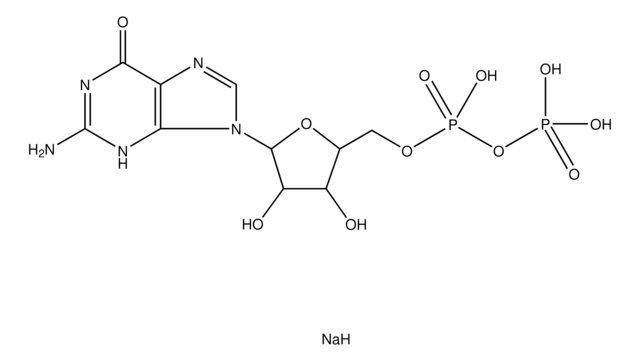B6179
Bongkrekic acid solution
from Pseudomonas cocovenenans, ≥95% (HPLC), solution, adenine nucleotide translocase inhibitor
About This Item
Produtos recomendados
Nome do produto
Bongkrekic acid solution, from Pseudomonas cocovenenans, ≥95% (HPLC), ~1 mg/mL
fonte biológica
Pseudomonas cocovenenans
Nível de qualidade
Ensaio
≥95% (HPLC)
Formulário
solution
concentração
~1 mg/mL
Condições de expedição
wet ice
temperatura de armazenamento
−20°C
cadeia de caracteres SMILES
CO[C@H](C/C=C\C=C\CC\C=C\C[C@H](C)\C=C\C(CC(O)=O)=C/C(O)=O)\C(C)=C/C=C(\C)C(O)=O
InChI
1S/C28H38O7/c1-21(15-18-24(19-26(29)30)20-27(31)32)13-11-9-7-5-6-8-10-12-14-25(35-4)22(2)16-17-23(3)28(33)34/h6,8-12,15-19,21,25H,5,7,13-14,20H2,1-4H3,(H,29,30)(H,31,32)(H,33,34)/b8-6+,11-9+,12-10-,18-15+,22-16-,23-17+,24-19+/t21-,25+/m0/s1
chave InChI
SHCXABJSXUACKU-WUTQZGRKSA-N
Aplicação
Ações bioquímicas/fisiológicas
Características e benefícios
Outras notas
forma física
Código de classe de armazenamento
12 - Non Combustible Liquids
Classe de risco de água (WGK)
WGK 1
Ponto de fulgor (°F)
Not applicable
Ponto de fulgor (°C)
Not applicable
Equipamento de proteção individual
Eyeshields, Gloves, multi-purpose combination respirator cartridge (US)
Escolha uma das versões mais recentes:
Já possui este produto?
Encontre a documentação dos produtos que você adquiriu recentemente na biblioteca de documentos.
Os clientes também visualizaram
Conteúdo relacionado
Apoptosis, or programmed cell death (PCD), is a selective process for the removal of unnecessary, infected or transformed cells in various biological systems. As it plays a role in the homeostasis of multicellular organisms, apoptosis is tightly regulated through two principal pathways by a number of regulatory and effector molecules.
Nossa equipe de cientistas tem experiência em todas as áreas de pesquisa, incluindo Life Sciences, ciência de materiais, síntese química, cromatografia, química analítica e muitas outras.
Entre em contato com a assistência técnica